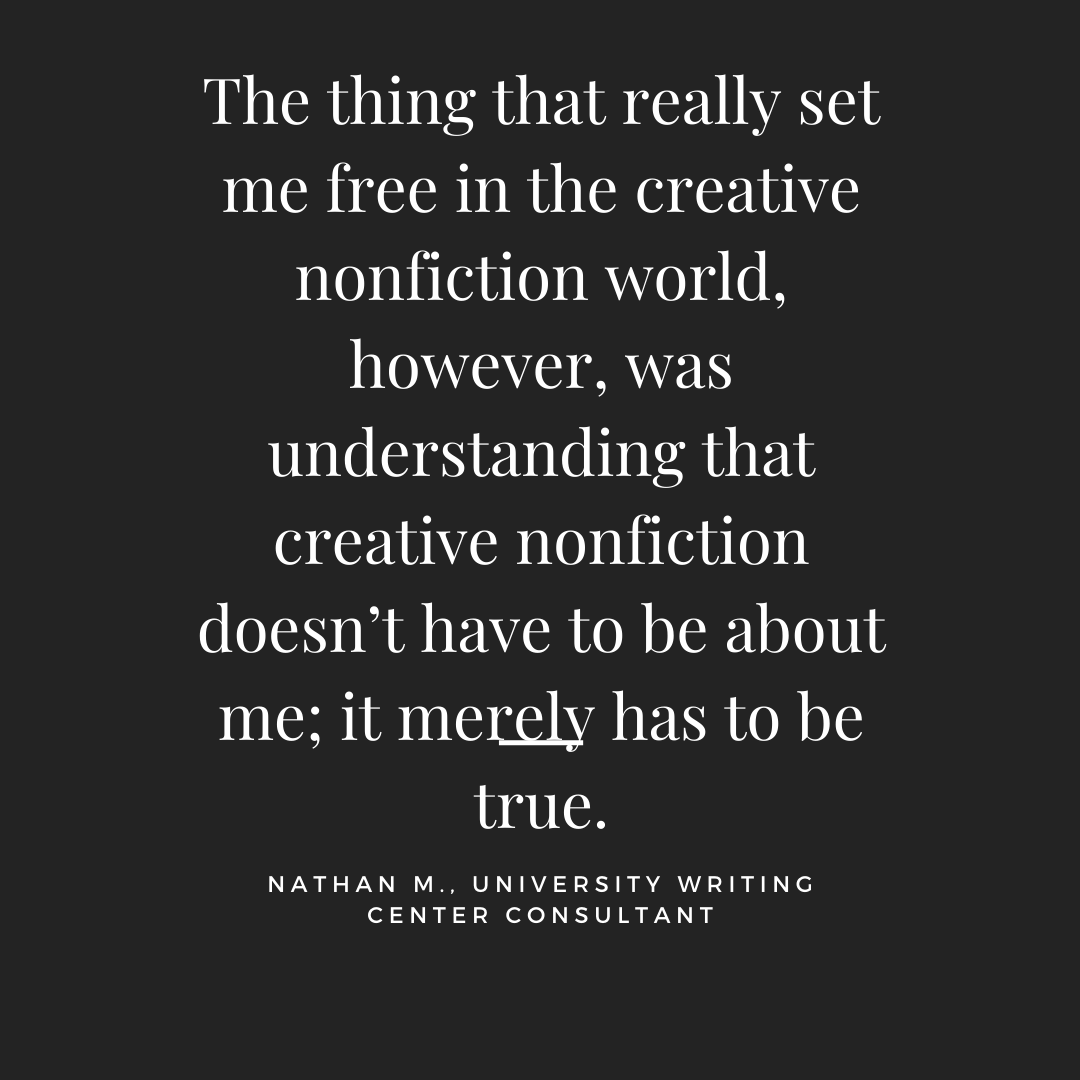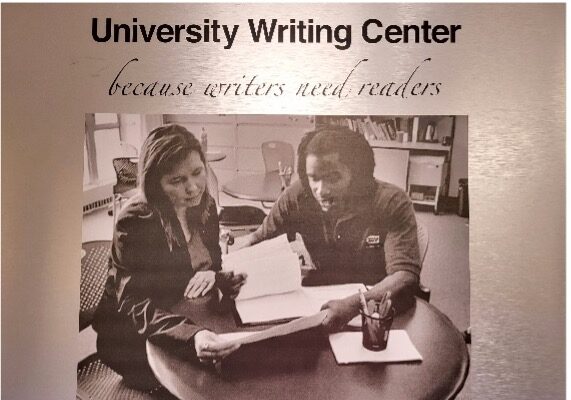By: Nathan M.
From our marvelous consultant Nathan, here is the first of three installments on writing creative nonfiction!

When I first started writing creative nonfiction, I had the same anxieties that all my classmates seemed to: I didn’t think that my life was interesting enough that anyone would want to hear about it. I was a sophomore in college the first time I took a creative nonfiction class, and knew just enough about the world to understand how much I didn’t know. How could I possibly write essays about my life? The man who invented the word “essay,” one of the founding minds of the genre, Michel de Montaigne, shared similar misgivings; in 1580, he said “I am myself the matter of my book…You would be unreasonable to spend your leisure on so frivolous and vain a subject.” So why did I feel so drawn to write in this genre?
One of my creative writing professors told me to “stick the finger into the wound” and write whatever what came out. I wrote like this for a while, but eventually concluded that if picking open old wounds is what made me interesting, then I’d much rather be boring. At the same time though, I was at a loss: if not the things that have happened to me, what was possibly interesting enough to write an essay about?
The more creative nonfiction I read, the more I understood that “creative nonfiction” is not just a fancy term for “memoir.” Memoir is a type of creative nonfiction, certainly, but Montaigne’s assessment of the form was somewhat reductive. Creative nonfiction encompasses everything that fiction isn’t; anything that’s true about the world, structured in any form. It can lean so heavily into lyricism that it’s rubbing shoulders with poetry, as James Agee Knoxville’s “Summer of 1915” does, or it can tell the intimate details of someone’s life in a largely narrative form—and there’s a seemingly endless expanse between these two extremes to explore.
The thing that really set me free in the creative nonfiction world, however, was understanding that creative nonfiction doesn’t have to be about me; it merely has to be true. For example, Roxanne Gay’s acclaimed essay collection Bad Feminist is framed by her experiences, but it’s more broadly about what it means to be a feminist than it is about her as an individual. David Sedaris’s humorous essays are notable because of the perspective he brings to everyday events rather than because of the events themselves. Even Montaigne, whose reductive definition of creative nonfiction had at first terrified me, wrote essays that reached far outside the self. His famous essay “Of Cannibals” is a grappling with morality and social norms; it’s about society, about humanity, and not at all about Montaigne’s life.
Even works of creative nonfiction that fall into the memoir category don’t have to stick to one linear style of storytelling. Carmen Maria Machado’s 2019 collection In The Dream House is a series of essays in different styles that all point back to her abusive relationship with her ex in different ways. She incorporates aspects of literary criticism and poetry. She writes about Dr. Who and queer villains in movies and a number of other things, and she combines it flawlessly with personal narrative. Francisco Cantú’s The Line Becomes a River: Dispatches from the Border tells the story of his time as a border patrol agent and what compelled him to leave, but it also works in surreal lyrical segments about his nightmares.
Creative nonfiction is just as much about how the story is told as it is about what the story is. It can be as much or as little about yourself as you want it to be. I’ve come to understand this genre not as another box to fit into but rather as the open space between poetry, fiction, literary criticism, and every other kind of writing I can think of. Anyone, regardless of what kind of life they’ve lived or what kind of writing they prefer, can make a space for themselves in creative nonfiction. The only restriction to the genre is that it has to have some foundation in truth—if not in lived experience, at least in things that are real, that have happened.
Stay tuned for part two, where I’ll talk more specifically about determining what “truth” means in creative nonfiction!
Catch Nathan’s next installment on creative nonfiction, coming February 25th!

